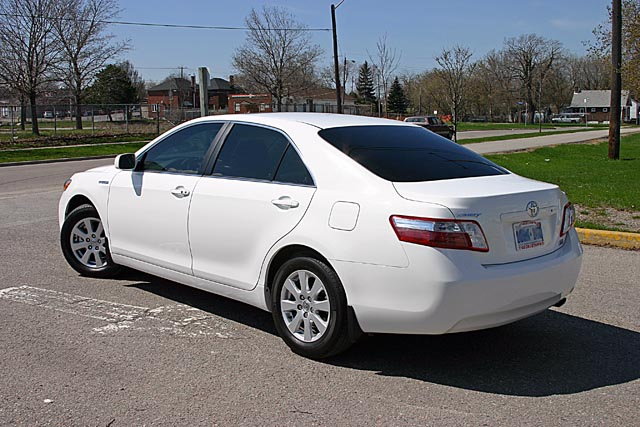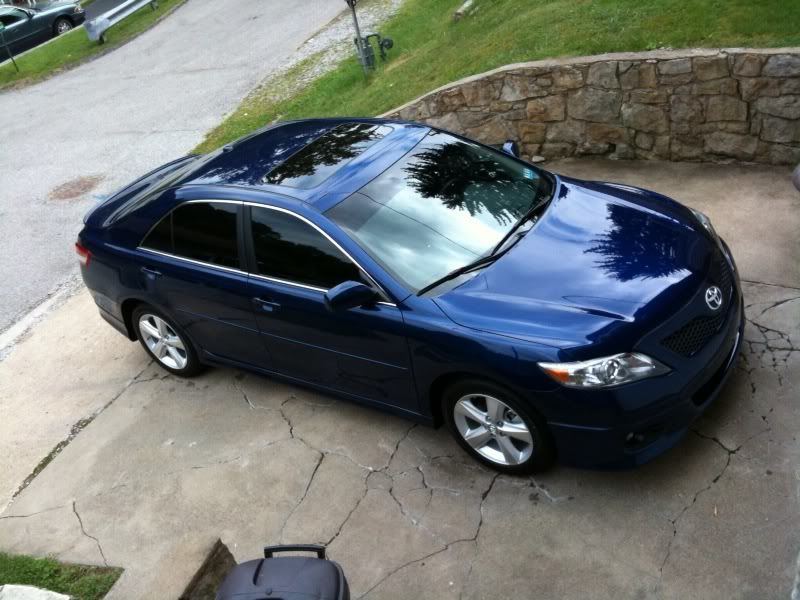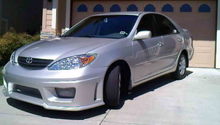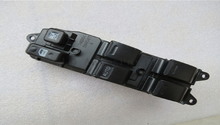Toyota Camry 1997-2011: Window Tint Modifications
Thinking about tinting the windows on your Toyota Camry? Good choice. Here are some things to consider before tackling the job.
This article applies to the Toyota Camry (1997-2011).
There's something pretty cool about seeing a sleek and shiny car driving down the street at night with tinted windows. Your mind tells you that somebody hip and sophisticated is going out for a night on the town. During the daylight hours a car with tinted windows adds an element of mystery to the persona of the car and its driver.
But there are many reasons for tinting your windows. This article covers some of the ins and outs of the process and how to get it done.
Why Tint your Camry's Windows?
There are many reasons to consider tinting your Camry's windows. A casual survey of Toyota owners will reveal perhaps as many reasons as there are owners but I can think of at least four.
First, it changes your car's appearance. As noted above there is something sleek and sexy about a car with tinted windows. And if you're craving a change, window tinting is not all that expensive or complicated to spice up the look of your Camry.
Second, tinted windows promote privacy and, I might add, some added safety. I would choose tinted windows simply for the sake of the added privacy while driving around my city. But, tinted windows also add an element of safety in that it is far more difficult to see anything you've left lying on the seat or on the floor. And if you can't see an object inside the car, it is less inviting for a potential thief who might be tempted to help himself or herself to your property.
Third, it will help keep your car cooler during warm summer days. Where I live, it gets brutally hot during the days of July and August. We're talking consistent temperatures in the mid to upper 90s and often climbing into the low triple digits. Tinted windows will not lower the sun's temperature but it will make your steering a little cooler when you get in your car to drive home after work.
Finally, tinted windows will help reduce the glare while driving. Tinting your windows will help eliminate that horrible glare from the sun during those hot, sultry summer days I just spoke about. But it will also help reduce the glare of tail lights while driving through traffic in the evening.
Again, if you're thinking about tinting your Camry's windows, I think it's an excellent decision, but there are some things to consider.

Window Tinting Laws
Before you start tinting your Camry's windows, it's a good idea to find out what your state's laws say regarding the legal percentage allowed for tinting. Every state is different. Some say it's illegal to tint beyond a certain level. Others say you can only tint the back windows and not the front.
Once you know what your local laws are you can begin to narrow down some of your choices. Here are a couple of places to go on the Internet to find out what the laws are in your respective state. TintLaws.com gives a complete breakdown of every state in the United States and is a go-to authority for find out what your location's regulations are. You might also want to consider TintCenter.com/laws. Either will provide exactly what you need before making your window tint decisions.

Do-it-Yourself? Or Hire a Professional?

DIY Cost – Pre-Cut Window Tint Kits = $35 - $50
Professional Cost – $175 - $219
Skill Level – Difficult; There are all kinds of tricky as well as delicate ins and outs to handle with this kind of do-it-yourself job. It requires a great deal of patience and skill.
If you do choose to do it yourself, here are some things to consider in the process.
- Take the time to review all the various articles and videos to give yourself a much better idea of what to do and what not to do.
- Note that the rear window requires more skill than the others so please study the process before attempting it.
- It should go without saying but (I'm channeling your mom here) the windows need to be extremely clean before you begin.
- If you're using any water in the process, use "distilled" water as it doesn't have some of the minerals that will cause or leave spots.
- Do NOT use a razor blade on the rear window. Most rear windows have a built-in defroster and some also include an antenna and a razor blade could possibly cause harm to one or the other or both.
- A professional will already know your state's laws, so if you are doing it yourself, be sure to check what the regulations are before choosing your tint percentage and material.
- Regarding percentages, here's something else to keep in mind: your stock windows already have a slight tint to them. So, if you installed a 30% tint on your stock windows, the combination would give you a 37% or a 45% tint. Hence, before beginning, find out your stock shade percentage. Knowing this ahead of time will save you from learning it the hard way.
- If you are using heat in your tinting process, keep in mind that some film material will burn if overheated. Make sure you've purchased a high-quality material that will keep this possibility to a minimum. A local tint shop may be able to sell you a higher quality material if you're doing it yourself. But also be aware that it will cost more than a discount source.
Deciding to do it yourself versus having your tinting job done professional is an important decision. Conventional wisdom says that if you study up and have patience, you should be able to do a good job. But no matter which route you choose, enjoy your new ride.
Related Discussions and Sites
- Window Tint - Camryforums.com
- Window Tinting - Camryforums.com
- Window Tint Laws - Tintlaws.com
- State Window Tint Laws - Tintcenter.com






